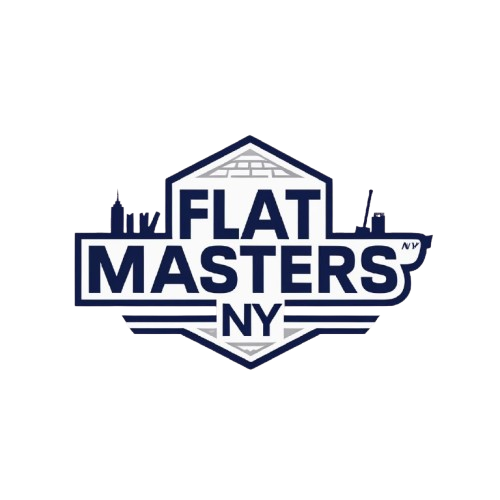Expert Flat Roof to Existing Roof Connection Solutions
After twenty-three years connecting flat roofs to existing structures across Queens, I can tell you that most homeowners worry about the wrong things. They obsess over membrane types and drainage slopes, but what keeps me up at night is the connection point between that new flat roof and whatever's already there. Get this wrong, and you're looking at water damage that'll make your initial roofing investment seem like pocket change.
The thing about roof attachment in New York City is that every building tells a story. Yesterday I was on a 1920s brick colonial in Forest Hills where the homeowner wanted to add a flat roof extension over their kitchen. The existing pitched roof had three layers of shingles, deteriorating fascia boards, and - surprise - no proper vapor barrier. You can't just slap a flat roof membrane onto that mess and call it a day.
Understanding Flat Roof to Existing Roof Connection Fundamentals
When we talk about how to attach a flat roof to an existing roof, we're really discussing three critical connection types that determine whether your project succeeds or becomes a costly nightmare. The structural connection handles the weight and wind loads - flat roofs in Queens deal with everything from nor'easters to summer thunderstorms that can generate winds exceeding 70 mph. The weather seal prevents water infiltration at that vulnerable junction where two different roofing systems meet. Then there's the thermal bridge management, which most contractors completely ignore until you're dealing with ice dams and condensation issues.
In my experience, the biggest mistake homeowners make is treating this as a simple attachment problem. It's not. You're essentially marrying two different building systems that expand, contract, and move at different rates. That beautiful flat roof membrane might be perfectly installed, but if the connection to your existing pitched roof fails, water finds every gap. Always does.
Structural Integration Methods
The structural connection between your new flat roof and existing roof system starts with understanding what you're connecting to. Most Queens homes built before 1950 use dimensional lumber framing - actual 2x8s and 2x10s, not today's engineered lumber. These older joists are often stronger than modern alternatives, but they've been carrying loads for decades and may have settled or sagged.
We use three primary structural integration approaches depending on the existing roof configuration:
- Ledger board attachment - Bolting a pressure-treated ledger directly to the existing structure's rim joist or wall framing
- Rafter tie-in systems - Connecting new flat roof joists directly to existing rafter tails using engineered hangers
- Independent support structures - Building separate load-bearing walls when the existing roof can't handle additional loads
The choice depends on your existing roof's condition and load capacity. Last month, we had a situation in Elmhurst where the existing roof structure was already maxed out supporting clay tiles and couldn't handle the additional dead load of a flat roof system. We ended up building an independent support wall - cost more upfront but prevented a catastrophic failure down the road.
Critical Flashing and Sealing Techniques
Here's where most DIY projects and inexperienced contractors fail spectacularly. The flashing detail at the flat roof to existing roof connection isn't just about keeping water out - it's about managing water movement, vapor transmission, and thermal expansion while maintaining structural integrity. In Queens, we deal with temperature swings from single digits in winter to 95+ degrees in summer. Materials expand and contract constantly.
The flashing system must address multiple water entry points simultaneously. Step flashing along the existing roof surface, counterflashing embedded into the existing roof covering, and a continuous membrane transition that doesn't rely solely on sealants. I've seen too many jobs where someone just ran a bead of caulk along the connection and called it weatherproof. That caulk will fail - might take six months, might take three years, but it will fail.
We use a multi-layer approach: base flashing mechanically fastened to the deck, intermediate flashing that integrates with the flat roof membrane system, and cap flashing that sheds water away from the connection. Each layer has a specific function, and removing any one component compromises the entire system.
Membrane Selection and Compatibility
The flat roof membrane you choose affects every aspect of the connection design. EPDM rubber membranes require different connection details than TPO or modified bitumen systems. Each material has specific thermal movement characteristics, adhesion requirements, and compatibility issues with existing roofing materials.
EPDM systems work well for flat roof to existing roof connections because the membrane can be fully adhered in critical areas while allowing controlled movement elsewhere. The rubber remains flexible in cold weather - important in Queens where January temperatures can drop below 20 degrees. TPO offers excellent reflectivity for energy efficiency but requires more precise installation tolerances at connection points.
Modified bitumen systems, particularly those with granulated surfaces, integrate easily with existing asphalt shingle roofs. The materials are chemically compatible, and the installation process allows for gradual transitions between roof systems. However, these systems require flame application, which creates fire hazards and may violate local regulations in dense urban areas.
Professional Installation Process Overview
A proper flat roof to existing roof connection installation follows a specific sequence that can't be rushed or modified without compromising the results. We start by thoroughly examining the existing roof structure, checking for adequate load capacity, proper ventilation, and structural integrity. Any deficiencies must be corrected before beginning the connection work.
The installation sequence typically follows this pattern:
- Structural assessment and reinforcement if needed
- Removal of existing roofing materials in the connection zone
- Installation of structural connections and support systems
- Application of vapor barriers and insulation systems
- Installation of base flashing and drainage components
- Flat roof membrane installation with proper tie-ins
- Final flashing and weathersealing installation
- Testing and quality verification
Each step requires specific weather conditions and curing times. You can't install modified bitumen in freezing weather, and EPDM adhesives won't cure properly in high humidity. Scheduling becomes critical - we've had jobs delayed weeks waiting for proper conditions.
The testing phase involves both water testing and thermal imaging to verify the connection integrity. Water testing reveals immediate leaks, but thermal imaging shows thermal bridges and potential condensation problems that might not manifest for months. Both tests are essential for long-term performance.
| Connection Method | Best For | Typical Cost Range | Installation Time |
|---|---|---|---|
| Ledger Board System | Strong existing structure, simple geometry | $18-25 per linear foot | 2-3 days |
| Rafter Tie-In | Existing rafters in good condition | $22-32 per linear foot | 3-4 days |
| Independent Support | Overloaded or weak existing structure | $35-50 per linear foot | 5-7 days |
| Membrane-Only Transition | Temporary or lightweight applications | $12-18 per linear foot | 1-2 days |
Common Connection Failures and Prevention
In two decades of flat roof installations and repairs, I've diagnosed hundreds of connection failures. The patterns are predictable, but the damage is always expensive to repair. Most failures occur within three to seven years of installation, long enough for the original contractor to disappear but soon enough to devastate homeowner confidence.
Thermal movement accounts for roughly 60% of connection failures I've investigated. The flat roof system and existing pitched roof expand and contract at different rates due to different materials, orientations, and thermal masses. Without proper expansion joints and flexible connection details, something has to give. Usually it's the flashing seal, but I've seen structural connections fail when differential movement exceeds design tolerances.
Ice dam formation at the connection point causes another 25% of failures. The flat roof area often receives different snow loading than the pitched roof, and the connection creates a natural valley where ice can accumulate. Without proper insulation and ventilation design, ice dams form and force water up under roofing materials. The damage can extend far from the actual connection point.
Poor drainage design rounds out the major failure causes. Water must be directed away from the connection, not allowed to pond or flow toward it. I've seen installations where the flat roof drains correctly, but surface water from the existing pitched roof flows across the connection area. Eventually, that water finds a way through.
Local Code Requirements and Permits
Queens building codes require permits for most flat roof to existing roof connections, particularly when structural modifications are involved. The permit process protects homeowners by ensuring proper engineering and inspection, but it adds time and cost to projects. Budget 4-6 weeks for permit approval and factor inspection schedules into your installation timeline.
Structural connections must meet current building codes, not the codes in effect when the existing roof was built. This often requires upgrading connection methods and materials beyond what seems necessary. A 1940s house with adequate structural capacity might still need reinforcement to meet current wind load and seismic requirements.
Fire department access requirements affect flat roof installations in many Queens neighborhoods. Flat roofs are considered potential emergency access points, and connections must not create safety hazards for emergency responders. This affects height transitions, railing requirements, and access pathway design.
Quality Assurance and Long-Term Performance
A professionally installed flat roof to existing roof connection should perform reliably for 15-25 years with proper maintenance. The connection point requires annual inspection and periodic maintenance, but major repairs shouldn't be necessary during the expected service life.
We provide detailed maintenance instructions for every connection we install. The homeowner needs to understand what to look for, when to call for professional service, and what maintenance they can safely perform themselves. Most connection failures develop gradually and can be prevented with early intervention.
Quality assurance starts during installation with proper testing and documentation, but continues through the warranty period with scheduled follow-up inspections. We photograph every connection detail during installation and provide those images to the homeowner for future reference. When problems develop years later, those installation photos are invaluable for diagnosis and repair planning.
The investment in a properly designed and installed flat roof to existing roof connection pays dividends in reduced maintenance costs, improved energy efficiency, and peace of mind. But like most construction work, the quality of the installation determines long-term performance. Choose experienced contractors who understand both flat roof systems and traditional roofing, get proper permits, and insist on thorough testing before final payment.
At Flat Masters NY, we've perfected these connection techniques through thousands of installations across Queens. Every job teaches us something new about local conditions, building practices, and performance expectations. That experience translates into reliable connections that protect your investment for decades to come.

